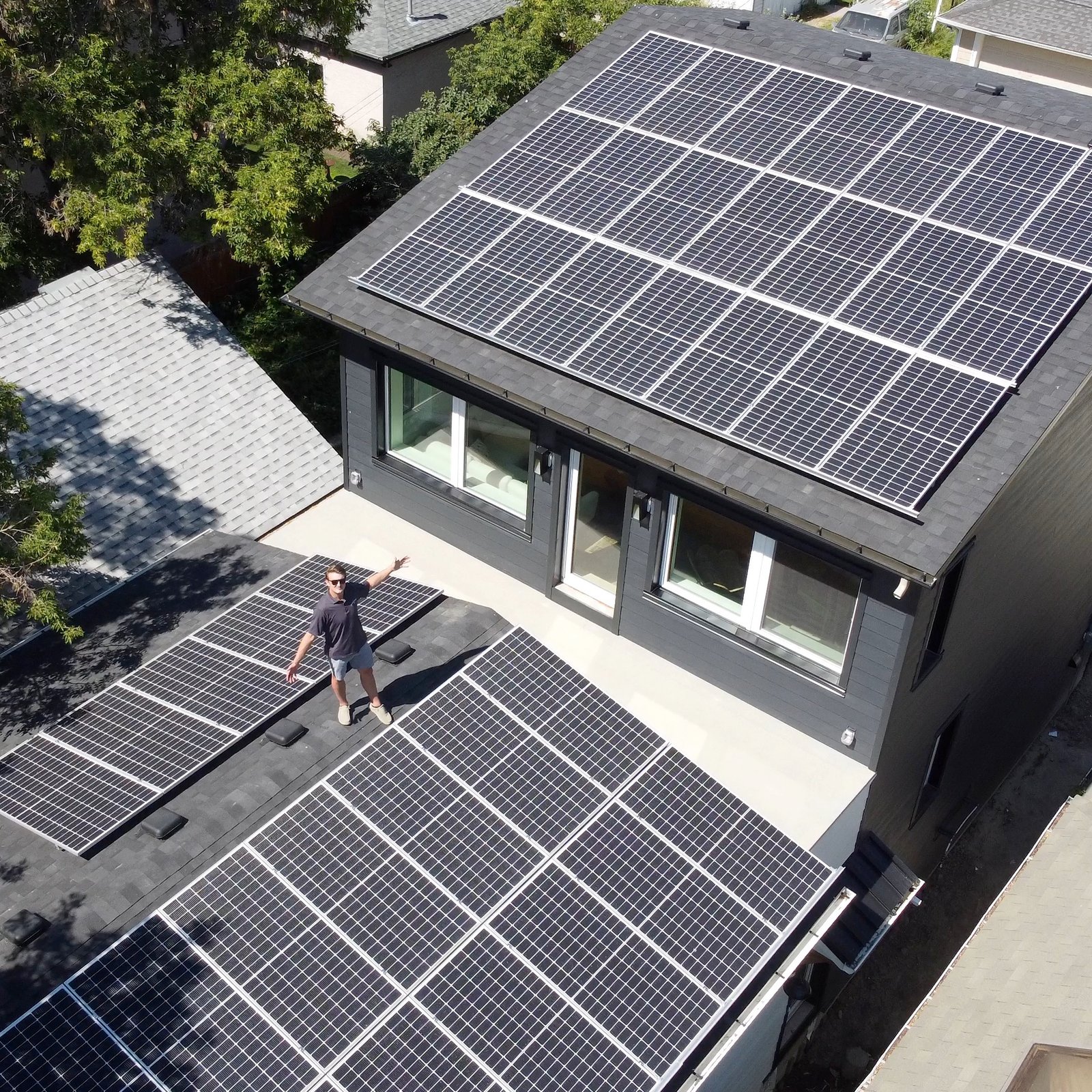In 2021, everybody was making pledges to get to net-zero emissions. Nations were doing it, cities were doing it, companies were doing it and some folks such as builders did more than pledge to get to net-zero.
As we look back on 2021 we recall some of our favourite stories on the journey to net-zero emissions.
Our favourite story comes from Calgary, Alberta where Axel and Heather Sorensen are specializing in building super energy-efficient homes and last year built one of the most inspiring net-zero passive homes we have seen in Canada.
The Sorensens started Homes by Sorensen in 2015 and have quickly become specialists in building super energy efficient net-zero homes in Calgary.
On the journey to net-zero emissions, buildings are responsible for up to 33 per cent of greenhouse gas emissions. Building new net-zero homes solves the challenge in new buildings, but one of the weakest links even in these super-efficient homes are the windows.
This troubled Greg Clarahan for many years so he and his company LiteZone Glass set out to solve this problem. The Edmonton-based company has created an amazing R22 window, one of the most energy-efficient windows in the world. These super windows are 7.5 inches thick and contain 2 panes of glass and 8 suspended films. Not everyone can use windows this thick, but thankfully LiteZone’s technology allows them to build glass units with any number of films. Their best-selling unit is 4.3 inches thick, has 2 panes of glass and 4 films, and clocks in at an amazing R17. This is a game-changer for super-efficient buildings.
Transportation is also a very significant contributor to greenhouse gas emissions, up to one-third of emissions in northern cities. In 2021, we stumbled across an amazing smart home innovation that is integrating solar-powered homes with electric vehicle charging.
DCBEL is a Montreal-based company that has created the R16 Home Energy Station. It’s a DC electric vehicle charger, it’s a solar inverter and it’s an AI-powered energy management system that can help homeowners optimize their use of solar power, charge their vehicles quickly and save money on energy.
The R16 Home Energy Station is also bidirectional and can isolate your home from the grid which means you could power your home for several days using electricity stored in your car battery or produced by your solar system. This sort of innovation has profound implications for the future of our grid.
Canada has established a goal of achieving net-zero emissions by 2050. The Canadian Centre for Climate Action has done exhaustive research into “Canada’s Net-Zero Future” and has evaluated more than 60 scenarios that could get us there in a report of the same name. We talked to Jason Dion, one of the authors of the report.
Then soon after we did that story the National Farmer’s Union released their own report on what it would take to get farming to net-zero.
This vision is presented in “A Vision of a near-zero-emission farm and food system for Canada,” a new report by the NFU. We spoke to one of the report’s authors: Darrin Qualman who is no longer farming, but he still lives on a family farm just outside Saskatoon, Saskatchewan. He is the director of climate crisis policy and action with the NFU.
The study is very interesting and yes it confirms that it will be very difficult to get farming to net-zero, but the vision of farming in the report is very compelling and challenges Canadians to focus more on local food systems to not only reduce emissions but focus more on high-quality food.
These are just five stories from 2021, but as the year winds down it really is becoming clear that despite how enormous the challenge is society appears to be embracing the idea of getting to zero emissions.

